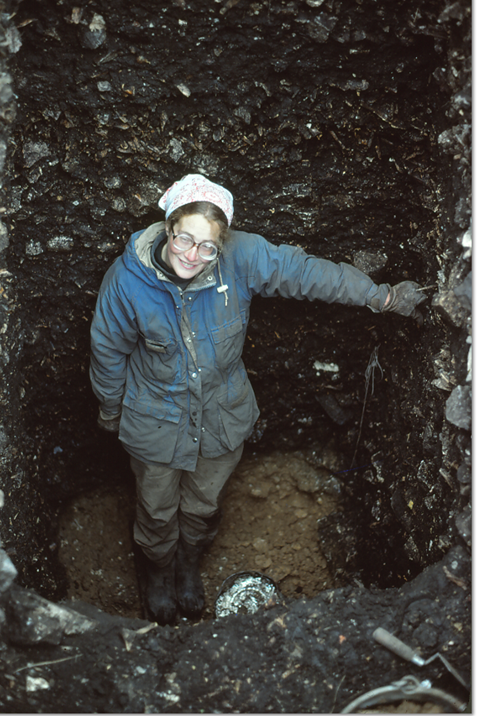Returning to Panaulauca
- Katherine Moore

- Aug 11, 2019
- 3 min read
Updated: Apr 19, 2022
Author: Katherine Moore.
As I left Junín to return home in July, I told collaborator Kurt Rademaker that for me our field season had been the trip of a lifetime, and I meant it in several ways. In a few weeks I had re-connected with work that I did for my doctoral dissertation from 1981-1983. Returning to the archaeological sites of Panaulauca and Pachamachay after almost 40 years was an emotional experience. The sites themselves seemed exactly as the last time I had seen them, and the dry season landscapes were very close to old pictures in my collections of slides. At this level, it seemed that no time had passed. Our ability to pull off a narrow plug of backdirt at Panaulauca and in just a few days to expose the exact surfaces that we had covered over in late October 1982 added to the feeling that I was still a young graduate student. Quickly though, I sensed the confidence of decades of experience since that time: I knew about and recognized more than I ever did back then and had a much better sense of the importance of Panaulauca to Peru and to the prehistory of the Americas. I also felt armed with the archaeology of today. We thought we were hot stuff back in the early 1980s while using quantitative methods and tightly integrated archaeobiological sampling. This year’s crew also thinks it might be hot stuff: in addition to now-traditional analytical approaches this group will be sampling for novel applications of isotope geochemistry, geoarchaeology, microbotanical remains, and refined, intensive dating. It was a privilege to work with this team, and I feel that the work that I did with John Rick and Deborah Pearsall in the first generation of research at Panaulauca was a firm foundation for this new initiative.

Given the sense of déjà vu about the site, I was much more conscious of the passage of decades in the history of Peru and how it had affected the puna grasslands of Junín. I met no one who remembered me, our original team, or years of fieldwork by North American and Peruvian archaeologists. The government SAIS (a national coop of agricultural producers who had managed the village of Atocsaico near Panaulauca) where archaeologists had stayed for months in lodgings used by contract sheep-shearers, had been dissolved. The village is very lightly occupied today compared to the 1980s, consistent with the flight to urban areas across rural Peru and also reflecting a transition to cattle-oriented rather than a sheep-oriented production system across the region. We found that many local men had spent multi-year stints herding sheep and cattle in rural parts of the western U.S. and were warmly greeted by those who stopped by our camp. Electricity had come to Atocsaico, allowing satellite reception of the America Cup soccer tournament in which Peru placed second/lost the heartbreaking final match against Brazil.
In the face of all this modernity and connection with the wider world, our fieldwork this year helped us connect with the ancient landscapes of the preceramic hunter-gatherers we had come to study. First, we were camping near the site rather than staying in the village, and I saw the cave at night (and in the bitter cold) for the very first time. We experienced the warmth and shelter of the cave in the evening with acute appreciation. Then, the vicuña! Groups of vicuna were so numerous than when driving in from the Central Highway, we literally could not count all the vicuña we saw. In 1981, I saw wildlife workers release about 75 vicuña in a pasture outside Atocsaico, founding the population of vicuna living in the region today. At that time vicuna were endangered world-wide, and everyone was excited to have such a beautiful and delicate-looking species to care for (the vicuña has always been featured on the Peruvian flag and national arms, though few people had seen one). Once the vicuña had dispersed, seeing a single animal was an exciting event. The vicuña are now community property and are periodically rounded up and sheared to collect the valuable silky fleece. They are numerous enough under regional protection and local management that they are now considered a species of “least concern” by conservation authorities. This successful re-establishment of the key resource for ancient hunters was a delight to observe but also of theoretical importance to our work. The local vicuña herds now mirror the hunting patterns I have documented in the archaeological record: that herds of vicuña in family groups could sustain long-term hunting in this distinctively rich and rolling grassland. Our current goal is to more precisely estimate the intensity of that prehistoric economy and relate it to the early occupation of the region.






















Comments